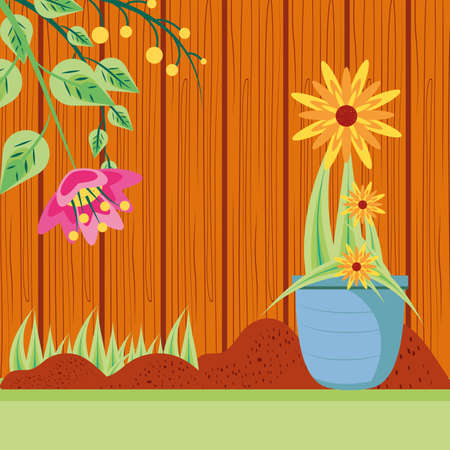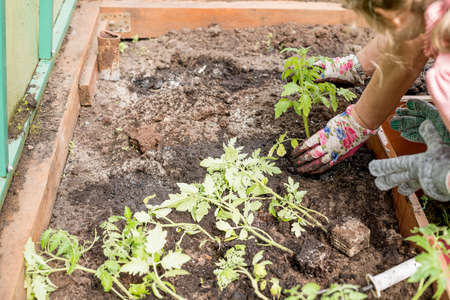Rethinking the American Lawn: Why Make the Switch?
For generations, a lush green lawn has been a symbol of the American dream—a tidy patch of grass in front of every home. But in recent years, homeowners across the U.S. are reimagining their yards, swapping out thirsty lawns for sustainable rock gardens. This shift isn’t just a trend; it’s a smart response to environmental challenges, rising costs, and new aesthetic ideals.
Environmental Benefits: Saving Water and Supporting Nature
One of the biggest motivations for replacing traditional grass lawns is water conservation. Lawns require constant watering—especially in arid or drought-prone regions like California, Nevada, and Arizona. By switching to a rock garden filled with native plants and drought-tolerant succulents, you can drastically cut down on water use. Plus, rock gardens support pollinators like bees and butterflies, encouraging local biodiversity.
Comparing Water Use: Grass Lawns vs. Rock Gardens
| Traditional Lawn | Sustainable Rock Garden | |
|---|---|---|
| Weekly Water Needed (per 1,000 sq ft) | ~620 gallons | <50 gallons |
| Pesticide & Fertilizer Use | High | Low/None |
Economic Motivations: Cutting Costs and Maintenance Time
A traditional grass lawn isn’t just thirsty—it’s expensive. Between buying fertilizer, running sprinklers, mowing, edging, and dealing with weeds, maintaining a lawn eats up both time and money. A sustainable rock garden requires far less upkeep. Once established, these gardens need minimal irrigation and almost no mowing or chemical treatments.
Lawn vs. Rock Garden: Cost & Effort Breakdown
| Traditional Lawn | Sustainable Rock Garden | |
|---|---|---|
| Annual Maintenance Cost | $500-$1,000+ | $100-$200 (mostly initial setup) |
| Average Hours Spent/Month | 8-10 hours | 1-2 hours |
Aesthetic Appeal: Modern Looks for Urban Spaces
The look of a classic green lawn might be timeless, but today’s homeowners crave something unique and stylish—especially in small urban spaces or on city balconies. Sustainable rock gardens offer endless creative options: you can mix colorful stones, driftwood, cacti, native flowers, and even outdoor art pieces to design a space that fits your personal style. These gardens bring a modern vibe that stands out from the sea of sameness.
Local Trends: Embracing Sustainable Yards
Cities across America are encouraging residents to make the switch by offering rebates for removing turf grass and planting drought-friendly landscapes. In places like Los Angeles and Denver, you’ll find entire neighborhoods where rock gardens and xeriscaping are quickly becoming the new normal—not only saving resources but also creating beautiful outdoor living spaces that celebrate local plants and materials.
Planning Your Rock Garden: Assessing Space and Sunlight
Start with a Yard Assessment
Before you pick out your favorite stones or drought-resistant plants, it’s important to understand your yard. Whether you have a cozy backyard in the city or just a small urban balcony, every space can be transformed into a beautiful rock garden. Here’s how to get started:
Measure Your Available Space
You don’t need a huge lawn to create an eye-catching rock garden. Use a tape measure or even pacing steps to estimate the size of your area. This will help you plan the layout and decide how many rocks and plants you’ll need.
| Space Type | Suggested Rock Garden Style |
|---|---|
| Tiny Balcony (under 30 sq ft) | Potted rock gardens, vertical setups, small gravel patches |
| Small Urban Yard (30-150 sq ft) | Layered rock beds, border gardens, corner features |
| Larger Lawn (over 150 sq ft) | Winding pathways, multiple zones, water features |
Check Your Sunlight Exposure
Plants and rocks both interact differently with sunlight. Spend a day observing where the sun hits in your yard or balcony—morning, afternoon, and evening. Most classic rock garden plants love full sun (at least 6 hours), but partial shade works too if you choose shade-tolerant varieties.
| Sunlight Level | Best Plant Types |
|---|---|
| Full Sun (6+ hrs) | Succulents, sedums, lavender, thyme |
| Partial Shade (3-5 hrs) | Ferns, hostas, coral bells |
| Mostly Shade (<3 hrs) | Mosses, shade-loving ground covers |
Know Your Soil Type
Sustainable rock gardens thrive best in well-draining soil. Grab a handful of dirt and squeeze it. If it crumbles easily, that’s good news for drainage; if it clumps like clay, you might want to mix in sand or compost for better results.
Quick Soil Check:
- Sandy: Drains quickly—great for most rock garden plants.
- Clay: Holds water—may need amending with organic matter.
- Loamy: Ideal balance—supports healthy plant growth.
Tips for Maximizing Small Urban Spaces
- Go Vertical: Use shelves or wall planters to add levels.
- Select Compact Plants: Look for dwarf or low-growing varieties.
- Create Visual Depth: Place larger rocks at the back or sides to make spaces feel bigger.
- Add Personal Touches: Incorporate local pebbles or driftwood for an urban vibe.

3. Choosing Sustainable Materials and Native Plants
When transforming your traditional lawn into a sustainable rock garden, picking the right materials and plants is key. Not only will this help reduce water usage and maintenance, but it can also create a beautiful space that blends perfectly with your local environment. Here’s how to make smart, eco-friendly choices for your new outdoor oasis.
Tips for Selecting Eco-Friendly Rocks and Pebbles
- Source Locally: Whenever possible, choose rocks and pebbles from local quarries or suppliers. This reduces transportation emissions and supports your community.
- Choose Durable Materials: Select rocks that are known for their longevity, such as granite or basalt. These hold up well in all weather conditions.
- Repurpose When Possible: Look for reclaimed stones or recycled concrete pieces. Many landscaping centers offer secondhand materials at a lower cost.
- Consider Color & Texture: Pick colors and textures that complement your home’s exterior and the natural landscape of your area.
Common Rock Types for American Rock Gardens
| Rock Type | Main Features | Sustainability Tips |
|---|---|---|
| Decomposed Granite | Natural look, excellent drainage, easy to walk on | Widely available in the West; check for local sources |
| Pebbles & River Rocks | Smooth texture, various sizes/colors, good for edging | Opt for stones harvested responsibly from nearby rivers |
| Lava Rock | Lightweight, porous, great for mulch and heat control | Sourced from volcanic regions like the Southwest; choose regional options when possible |
| Flagstone | Flat surfaces, ideal for pathways or patios | Select reclaimed flagstone or look for locally quarried stone |
Selecting Drought-Resistant Native Plants
Native plants are adapted to local climates and soil conditions, making them an eco-friendly choice that requires less water and care. They also attract beneficial pollinators like bees and butterflies.
Regional Native Plant Suggestions
| Region | Drought-Resistant Plants | Main Benefits |
|---|---|---|
| West Coast (CA, OR, WA) | California poppy, Manzanita, Blue fescue grass | Tolerates dry summers; bright flowers; minimal watering needed |
| Southwest (AZ, NM, TX) | Sagebrush, Agave, Red yucca, Desert marigold | Thrives in full sun; excellent heat tolerance; attracts hummingbirds |
| Southeast (FL, GA, SC) | Purple coneflower, Coreopsis, Muhly grass | Loves humidity; supports pollinators; low-maintenance blooms |
| Northeast/Midwest (NY, IL, MI) | Black-eyed Susan, Little bluestem grass, Wild bergamot | Copes with cold winters; native beauty; strong root systems prevent erosion |
Quick Tips for Planting Success:
- Group by Water Needs: Place plants with similar watering requirements together to save time and resources.
- Add Mulch: Use organic mulch around plant bases to help retain moisture and suppress weeds.
- Avoid Invasives: Steer clear of popular plants that aren’t native to your region—they may require more care or harm local wildlife.
Create a harmonious rock garden by mixing textures—combine spiky grasses with soft ground covers—and leave enough open space between rocks for each plant to thrive. With the right materials and thoughtful plant choices, your sustainable rock garden will flourish naturally while saving you effort year after year.
4. DIY Steps: Removing Lawn and Preparing the Ground
Step 1: Gather Your Tools and Materials
Before you start, make sure you have everything you need. Here’s a handy checklist to get you organized:
| Tool/Material | Purpose |
|---|---|
| Spade or Sod Cutter | Removing grass and turf |
| Rake | Smoothing out the soil |
| Wheelbarrow | Hauling away sod and debris |
| Shovel | Digging and leveling ground |
| Landscape Fabric (optional) | Weed control |
| Compost or Soil Amendment | Nourishing the soil |
| Tape Measure or Yardstick | Measuring your layout |
| Gloves & Safety Glasses | Personal protection |
Step 2: Remove Existing Grass and Weeds
Start by cutting your lawn into strips using a spade or sod cutter. Lift up each section of sod and set it aside for composting or disposal. Make sure to dig deep enough to get the roots—this helps prevent grass from growing back. If you have a lot of weeds, pull them by hand or use a hoe to clear the area.
Step 3: Prep the Soil for Better Drainage and Growth
After removing all the green stuff, grab your rake and level out the soil. If your yard has compacted dirt or clay, loosen it up with a shovel or garden fork. Spread a few inches of compost or soil amendment on top and mix it in well. This step keeps your rock garden healthy for years to come.
Soil Prep Quick Guide:
| Action | Why It Matters |
|---|---|
| Aerate soil with garden fork | Keeps roots happy and water flowing easily |
| Add compost or organic matter | Nourishes new plants and helps drainage |
| Smooth out surface with rake | Makes laying rocks easier later on |
Step 4: Lay Down Landscape Fabric (Optional)
If you want extra weed control, roll out landscape fabric across your prepped soil. Overlap edges by a few inches and secure with landscape pins. This barrier makes maintenance much easier down the road, especially if you’re planning lots of small rocks.
Step 5: Map Out Your Rock Garden Layout
This is the fun part! Use stakes, string, or spray paint to outline where you want paths, plant beds, and focal points. Having a plan helps keep things organized when it’s time to bring in rocks and plants.
Your Ground Is Ready!
You’ve set the stage for a beautiful, sustainable rock garden that looks great all year long.
5. Design Ideas for a Stylish Urban Rock Garden
Transforming your traditional lawn into a sustainable rock garden doesnt mean sacrificing style—especially if you have an urban or small-space yard. With the right design ideas, you can create a modern, eco-friendly retreat that fits perfectly with city living and looks amazing year-round. Here are some inspiration and practical tips to help you get started.
Pathways That Add Personality
Pathways are essential in any rock garden, offering both function and flair. For tight urban spaces, try winding gravel paths lined with river rocks or stepping stones interspersed with drought-tolerant groundcovers like creeping thyme or blue star creeper. These not only guide movement but also bring texture and visual interest.
Popular Pathway Materials Comparison
| Material | Look & Feel | Best For |
|---|---|---|
| Gravel | Casual, natural vibe | Flexible layouts, drainage |
| Pavers/Stepping Stones | Sleek, modern touch | Defined walkways, contemporary style |
| Flagstone | Rustic elegance | Traditional charm, sturdy footing |
Seating Areas: Small Space Retreats
Create a cozy seating nook by arranging a couple of weather-resistant chairs or a small bench among your rocks and plants. Adding a simple bistro table turns your garden into an inviting spot for morning coffee or evening relaxation. Use large flat stones as natural seats or platforms for planters to maximize space.
Clever Seating Ideas for Urban Spaces
- Boulder Benches: Integrate large flat rocks as built-in seating.
- Foldable Furniture: Easy to store when not in use—great for tight spaces.
- Raised Timber Deck: Adds warmth and a slight elevation for city views.
Container Features: Flexible and Fun
If youre dealing with a rooftop or balcony, containers are your best friends. Cluster different-sized pots filled with succulents, ornamental grasses, or even native wildflowers among your rocks. This adds height variation, color, and allows you to change up your look seasonally.
Top Container Plants for Urban Rock Gardens
| Plant Type | Main Benefit | USDA Hardiness Zones* |
|---|---|---|
| Succulents (e.g., Sedum, Echeveria) | Drought-tolerant, sculptural shapes | 3-11 (varies) |
| Dwarf Ornamental Grasses (e.g., Blue Fescue) | Add movement & texture | 4-9 |
| Lavender/Herbs (e.g., Thyme, Oregano) | Aromatic and useful in the kitchen! | 5-10 |
| Potted Shrubs (e.g., Dwarf Boxwood) | Year-round structure and greenery | 5-9 |
| *Check plant tags for your specific region! | ||
Tying It All Together: Simple Styling Tips
- Mood Lighting: Solar-powered lanterns or string lights add nighttime ambiance without extra wiring.
- Boulders as Focal Points: Use one or two striking rocks as natural art pieces.
- Moss & Pebbles: Fill small gaps with moss or polished pebbles for softness and contrast.
- Themed Accessories: Add American-made sculptures or vintage finds to reflect your personal taste.
- Lawn Alternatives: Replace grass patches with low-water groundcovers like clover or yarrow for greenery without the hassle.
Your sustainable rock garden can be both beautiful and practical—even in the heart of the city. Mix textures, levels, and colors to personalize your space and enjoy low-maintenance outdoor living all year long.
6. Upkeep and Enjoyment: Maintaining Your New Outdoor Retreat
Simple Maintenance Tips for Your Rock Garden
Transforming your lawn into a sustainable rock garden means less mowing and watering, but a little care will keep it looking its best. Here are some easy tips to maintain your eco-friendly outdoor space:
| Task | Frequency | What To Do |
|---|---|---|
| Weed Removal | Every 2-4 weeks | Hand-pull weeds or use a hoe to prevent them from taking over. |
| Stone Cleaning | Seasonally | Use a broom or gentle spray of water to remove dust and leaves. |
| Mulch Check | Twice a year | Replenish gravel or mulch around plants as needed to control weeds and retain moisture. |
| Plant Pruning | As needed | Trim back overgrown succulents, ornamental grasses, or perennials to keep shapes tidy. |
| Irrigation Check | Monthly (warm months) | If you have drip irrigation, inspect for clogs or leaks. |
Creative Ways to Enjoy Your Eco-Friendly Yard Year-Round
A rock garden isn’t just low-maintenance—it’s also versatile and fun! Make the most out of your new outdoor living area with these American-inspired ideas:
- Outdoor Living Room: Set up weatherproof seating on a flagstone patio for sunset-watching or morning coffee. Add string lights for cozy evenings.
- Kid-Friendly Play Space: Use smooth river rocks to create hopscotch patterns or stepping stone trails for imaginative play.
- Drought-Tolerant Herb Bed: Plant rosemary, thyme, and sage between stones. Snip fresh herbs while grilling outdoors!
- Wildlife Watch Zone: Install a birdbath or pollinator-friendly plants like lavender and yarrow to attract hummingbirds and butterflies.
- Meditation Corner: Place a small bench by artful boulders, add wind chimes, and enjoy peaceful moments surrounded by native plants.
- Fire Pit Gatherings: A pea gravel pad is perfect for gathering friends around a fire pit—just check local regulations before installing!
Your Year-Round Eco Oasis Awaits
No matter the season, your sustainable rock garden offers beauty, relaxation, and plenty of opportunities for family fun—all with minimal upkeep. Embrace the freedom of more time outdoors and less time behind the mower!


